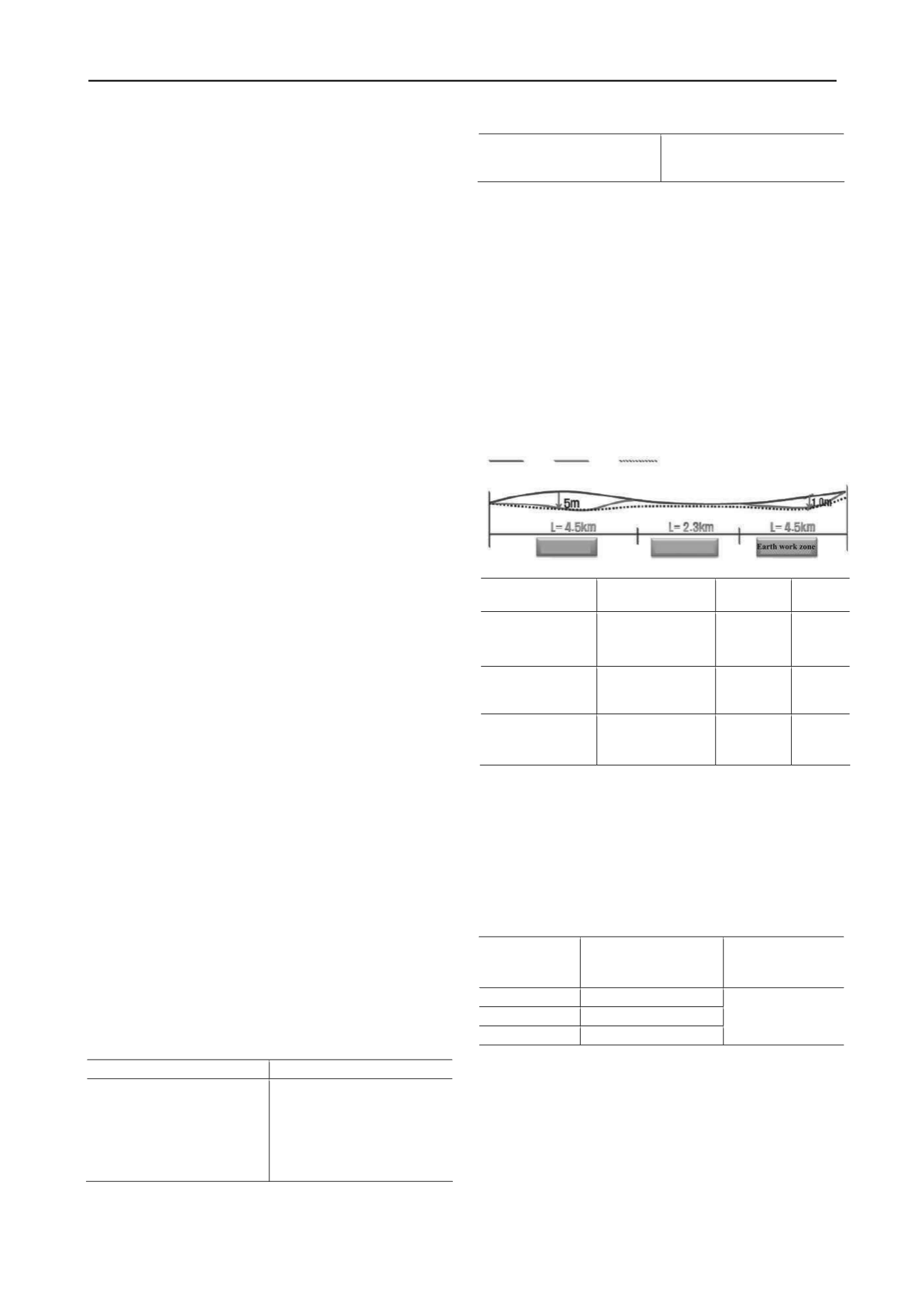
2955
Technical Committee 214 /
Comité technique 214
4.3
Shortage of time for construction
In the initial stage of construction, it was impossible to start the
improvement of the soft soil on time because of civil complaints
and delays in obtaining agreements for purchasing land. Multi-
phase construction work such as "PBD construction after
removing the existing road" may reduce the time available to
improve the soft soil. For example, in the case of the Namhae
line, on which construction was completed in 1996, it was
expected that it would take 24 months to improve the soft soil in
two sections of expansion and existing roads. However, it took
more than 24 months just to improve the soft soil in the
expansion section. Thus, at that time, the construction plan was
modified to reduce the time spent improving the soft soil of the
existing road (Korea Expressway Corporation, 2006).
4.4
Allowable residual settlement
For the construction of the expansion of the second branch, 10
cm of allowable residual settlement was applied equally, in spite
of the great differences in the depths of the soft soil in the
different zones. However, the problems and phenomena vary
depending on the conditions of the soft soil. If the 10 cm
standard is applied equally to all zones, it may produce an
inefficient effort. For example, it is necessary that more than
98% of the consolidation occur during the construction period
to satisfy the 10 cm residual settlement requirement, based on
the assumption that the thickness of the soft soil is 50 m and the
total settlement is 450 cm, applying Terzaghi's consolidation
theory. In this situation, the cost and time required to improve
the soft soil are excessive.
The road design manual clearly states that "For a road, it can
be applied 10 cm as the residual settlement after pavement, but
it should be appropriately applied by considering the factors
such as the purpose of use, importance, ground characteristics,
construction period, constructability and economic feasibility,
etc." Accordingly, the standard needs to be adjusted.
5 IMPROVEMENTS IN DESIGN
5.1
Establishment of improvement direction
The original design was made to satisfy a grade of 0.5% and for
traffic to be diverted during construction of the expansion, so
that in both directions (to Busan and to Naengjeong), where the
soft soil is present, the longitudinal grade could be raised and
the road could be widened. To satisfy the 10 cm residual
settlement requirement within 1,500 days (the construction time
allowed), the soil of the existing road was to be removed, the
soft soil improved and counterweight fill applied after banking.
This design approach poses many problems. For example, long-
term settlement can be induced by raising the longitudinal
grade, dividing the median strip bilaterally and counterweight
filling (banking), as well as not treating the existing road. Thus,
improvements to the plan are needed to solve these problems.
Table 1. Improvements in design.
Original design
Improved design
Removing the embankment of the
existing road + PBD + preloading
⇒
Satisfy the residual settlement
requirement during the
construction period
Non-improvement of the existing
road + Preloading
⇒
Inducing long-term settlement
Upward adjustment of the
longitudinal grade and connecting
the two alignments
Controlling the upward adjustment
of the longitudinal grade and
dividing the median strip bilaterally
5.2
Improvement factors
5.2.1 Lowering the longitudinal grade
To minimize the settlement due to overburden load on none
improved existing road, the embankment height was adjusted by
changing the standard for the minimum slope (from 0.5% or
more to 0.3% or more) given in the Manual and Guideline for
Standards of Road Structures stipulated by the Ministry of
Construction and Transportation (2003). Additionally, the
embankment height was changed to be similar to the
longitudinal grade of the existing road by changing a bridge
type (from passing below to passing above) that crosses the
main line and adjusting the height of the bridge to provide
sufficient overhead clearance.
Original design Improved design The existing road
Earth work zone
Bridge zone
How to adjust
Descriptions
Applicable
length
Remark
Change the way to
cross a bridge
Underground rigid
frame bridge
⇒
Pedestrian bridge
1.0km - 5m
Adjustment of
minimum
Longitudinal slope
0.5%
⇒
0.3% 4.5km - 1m
Adjustment of
passing extra height
of bridge
Secure the
minimum overhead
clearance
3.5km - 0.8m
Figure 4. A plan to adjust the longitudinal grade.
5.2.2 Change in the standard for allowable residual settlement
Disregarding the initial soil conditions (the depth of the soft
soil), the design standard for uniformly applied allowable
residual settlement is 10 cm. However, this standard was
changed based on the depth of the soft soil, as shown in Table 2.
Table 2. Design criteria for allowable residual settlement.
Thickness of soft
soil
Allowable residual
settlement
Degree of
consolidation
10 m below
10 cm
30 m below
20 cm
30 m above
30 cm
90% above
5.2.3 Line separation
To minimize damage due to differential settlement induced by
the different loading histories of the soil in each direction,
installation of a green belt 3~6 m wide on the median strip and
line separation for each direction were suggested. For the
existing road, an overlay was applied to match the finished
grade with a slight adjustment of the longitudinal grade. The
soil underneath the existing road was not improved.


